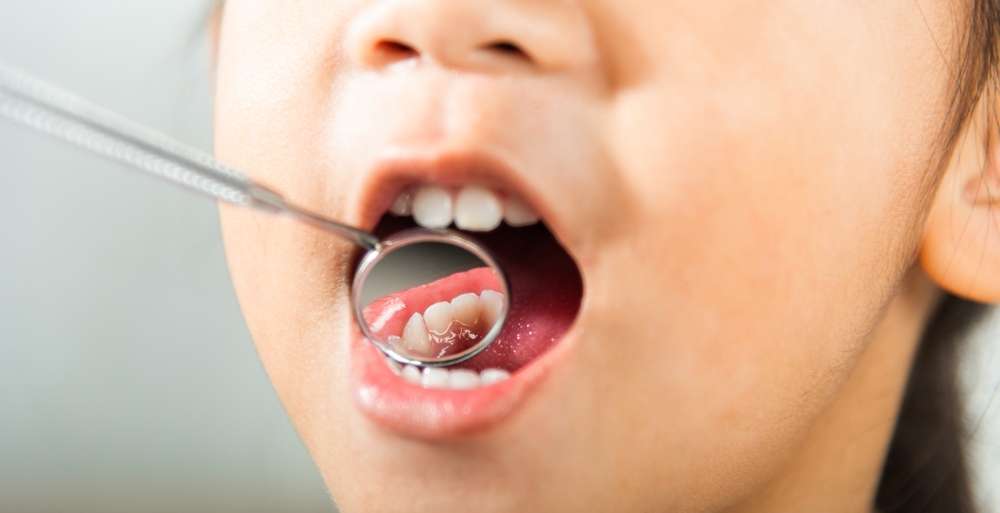Unlocking the Secrets to a Radiant Smile

A tooth cavity, scientifically known as dental caries, is more than a mere hole—it’s a testament to the ongoing battle between oral health and decay. This dental deterioration unfolds when the tooth’s enamel, the robust outer layer, succumbs to the relentless assault of acids present in the oral environment. Although cavities are a prevalent dental concern, particularly among children, their formation isn’t an unavoidable destiny. By delving into the intricacies of what causes cavities and embracing proactive oral hygiene practices, one can triumph over this dental foe, preserving a healthy and radiant smile.
The Culprits Behind Cavities: Unveiling Bacterial Intruders
Behind the scenes of dental cavities, a microscopic drama unfolds, starring bacteria as the main characters. Among these microbial actors, Streptococcus mutans takes center stage. Thriving on sugar, these bacteria skillfully convert it into acids that launch an attack on the tooth’s enamel. The formation of plaque, a sticky film comprising bacteria and food particles, sets the stage for this acid-producing orchestra. As time elapses, the acids in the plaque erode the enamel, creating microscopic holes. Left unattended, these minuscule openings delve deeper, breaching the dentin layer beneath the enamel, ultimately birthing a full-fledged cavity.
Susceptibility to Cavities: Age Matters, But Not Exclusively
While children frequently bear the brunt of susceptibility to cavities, the age-old assumption that adults are immune is debunked by the stark reality of new cavities forming. This challenges the prevailing notion that maturity inherently safeguards against dental decay. The intricate interplay of factors contributing to vulnerability extends beyond mere chronological age, encompassing diverse elements such as oral hygiene practices, dietary choices, and individual health conditions. Acknowledging this complexity reinforces the importance of adopting preventive measures across all age groups, emphasizing that proactive oral care is a lifelong commitment, irrespective of one’s stage in the journey of dental health.
- Inadequate Vitamin D Intake: The role of vitamin D in tooth development and strength is pivotal. A deficiency weakens the enamel, making it more susceptible to acid attacks.
- Dry Mouth: Conditions reducing saliva production, such as certain medications or medical conditions, create a dry mouth environment, allowing bacteria to thrive and elevating the risk of cavities.
- Sticky or Sugary Foods: Candies, snacks, and sugary drinks adhere to teeth, offering a constant fuel source for bacteria, promoting cavity formation.
- Sugary and Fizzy Beverages: Soda and other sugary drinks are acidic and can erode tooth enamel, while the sugar provides fuel for bacteria.
- Acidic Conditions: Heartburn or acid reflux can expose teeth to acid, contributing to erosion and cavities.
- Poor Oral Hygiene: Skipping brushing and flossing allows plaque to build up, creating a breeding ground for bacteria and increasing the risk of cavities.
Combatting Cavities: Strategies for Prevention
Thankfully, a repertoire of strategies empowers individuals to combat cavities and maintain optimal oral health.
Oil Pulling: An Ancient Ritual for Modern Oral Wellness
Oil pulling, an age-old practice, involves swishing oil, like sesame or coconut, in the mouth for about 20 minutes. While ongoing research refines our understanding of its effectiveness, preliminary studies hint at its potential comparability to mouthwash in reducing plaque and bacteria.
Licorice Root (Mulethi): Nature’s Antibacterial Warrior
Extracts from the Chinese licorice plant boast antibacterial properties, effectively combating cavity-causing bacteria. Whether used as a mouthwash or in alternative forms, licorice root extract proves adept at reducing Streptococcus mutans levels and preventing cavities.
Fluoride Toothpaste: Fortifying Enamel for Resilience
Brushing teeth twice daily with fluoride toothpaste stands as a cornerstone in cavity prevention. Fluoride’s ability to strengthen tooth enamel and aid in the repair of early decay underscores its importance in maintaining oral health.
Regular Dental Checkups: Vigilance for Prolonged Wellness
Routine dental checkups serve as a vigilant front against cavities. Dentists, equipped to remove plaque and tartar, identify early signs of cavities, ensuring timely intervention and addressing dental concerns promptly.
Mindful Diet: Nourishing Teeth for Enduring Strength
A diet conscious of sugary foods and drinks, coupled with the inclusion of calcium-rich options like dairy and leafy greens, fortifies teeth, rendering them more resistant to acid attacks.
Proper Brushing and Flossing Techniques: Everyday Guardians of Oral Health
A daily commitment to oral hygiene practices, including thorough brushing for two minutes, twice a day, and regular flossing, serves as a foundational strategy for eliminating plaque and food particles lodged between teeth. This diligent routine constitutes the frontline defense against cavities, preventing the accumulation of harmful bacteria and maintaining optimal dental health. Consistency in these simple yet effective habits reinforces the barriers against cavity formation, contributing to the longevity of a healthy and radiant smile.
Advanced Measures for Optimal Oral Health
Bolstering Oral Health with Probiotics
Research indicates that probiotics, the friendly bacteria known for their health benefits, may play a role in promoting oral health by displacing harmful bacteria. Foods like yogurt, kefir, and various fermented foods serve as excellent sources of these beneficial microorganisms. Incorporating these probiotic-rich foods into your diet could potentially contribute to a more balanced oral microbiome, creating an environment where harmful bacteria find it challenging to thrive. This dietary approach, complemented by good oral hygiene practices, represents a holistic strategy for nurturing overall dental wellness.
Sealants: Shielding Vulnerable Surfaces
Dental sealants, thin coatings applied to the chewing surfaces of molars, act as protective shields against cavities. Especially beneficial for children, sealants create a barrier, preventing bacteria and food particles from settling in the crevices of the molars.
In Conclusion: A Radiant Smile Awaits
In conclusion, understanding the intricate dynamics of cavity formation and adopting proactive preventive measures is paramount to cultivating a lifetime of optimal oral health. The fusion of meticulous oral hygiene practices, a diet mindful of sugary intake, and regular dental checkups forms an indomitable shield against the onset of cavities. It’s a commitment to oral well-being that transcends age, fostering a radiant and cavity-free smile as a lasting testament to the enduring power of prevention over cure. So, embark on your dental care journey today, sowing the seeds for a future adorned with confident and healthy smiles that stand the test of time.

